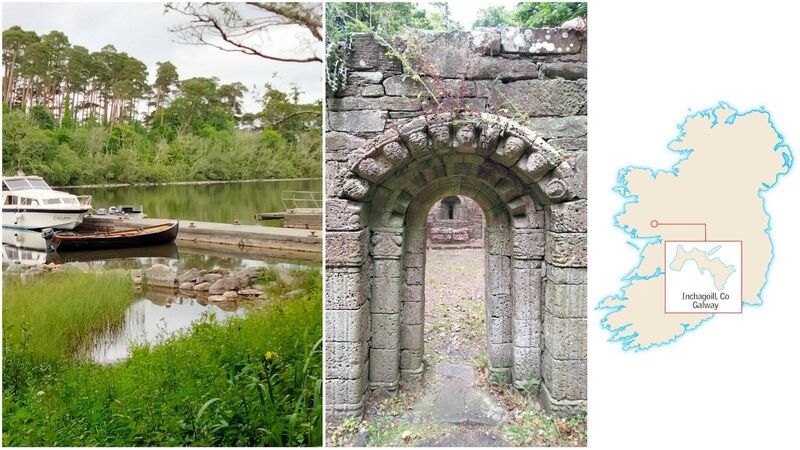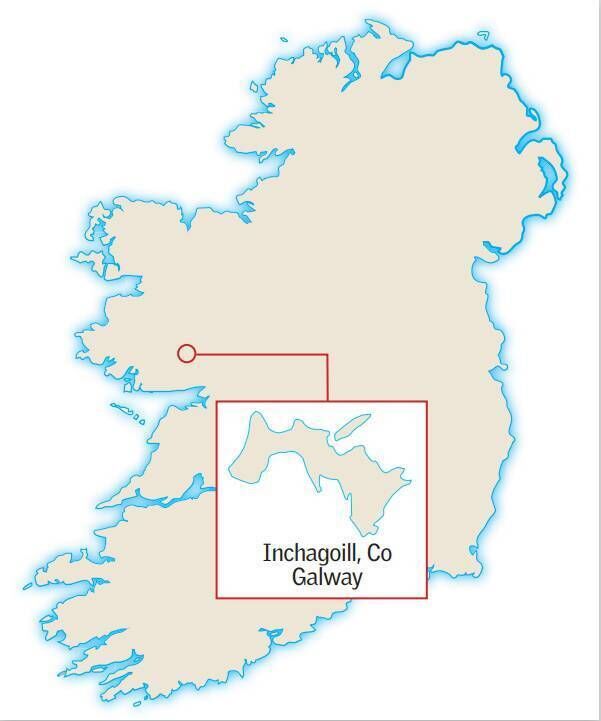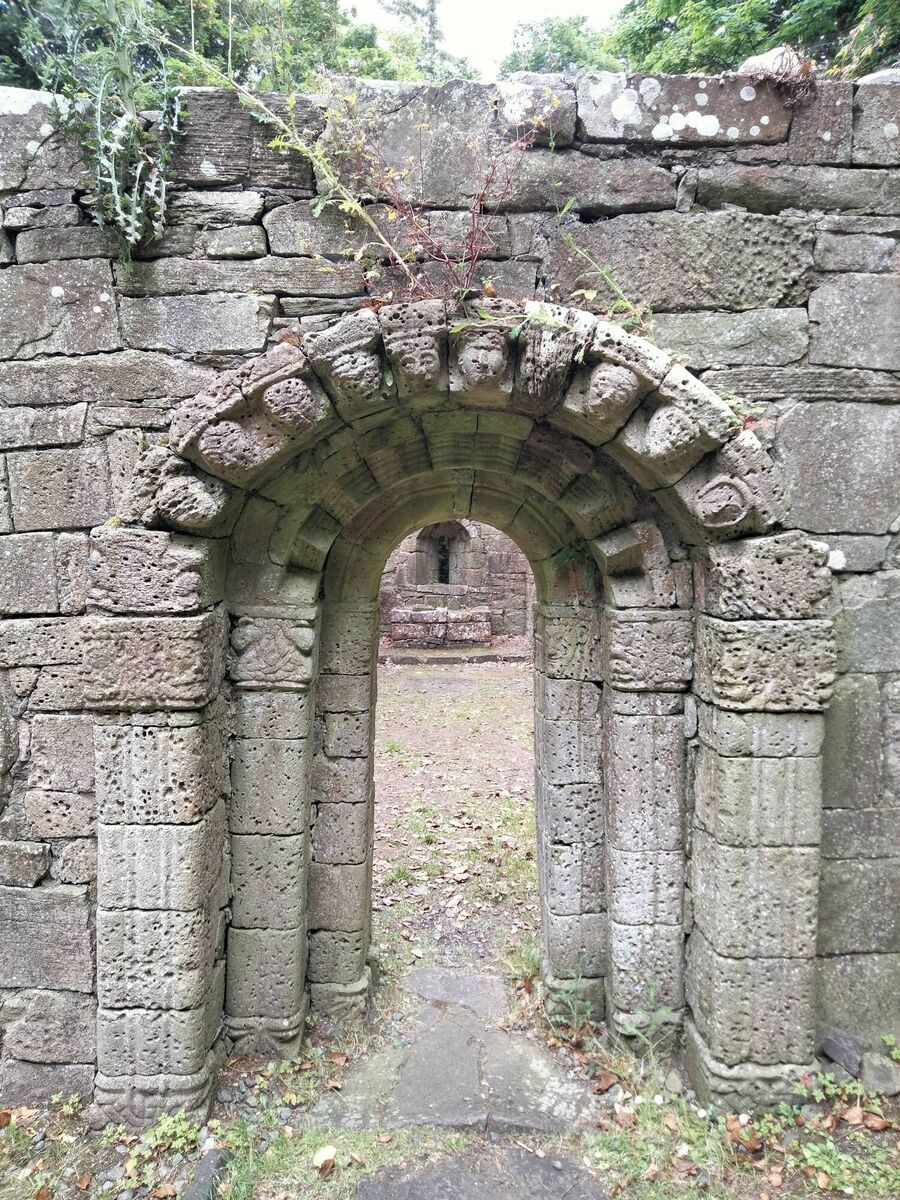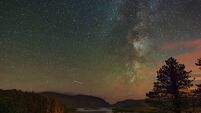Islands of Ireland: Inchagoill in County Galway offers fascinating early-Christian monuments

Boats tied up at the jetty; and the 12th century Romanesque, Templenaneeve, or Church of the Saints, on Inchagoill, County Galway. Pictures: Dan MacCarthy
As you scoot around the lake on a tour, you might think that if you have seen one of Lough Corrib’s forested islands, you have seen them all. Most of its dozens of islands are thickly wooded but some are not.
They are not 365 as some would have you believe. Last year, we visited Inishshanboe with its architect-designed house which was visited by Oscar Wilde’s father, William, in the 1850s.

Inchagoill derives from Inis an Ghoill and translates as ‘Island of the Devout Foreigner or Stranger’. A note on logainm.ie quoting the 17th-century historian, Roderick O’Flaherty, explains the origin: "Inis an Ghoill, so called of a certain holy person who there lived of old, known only by the name of An Gall Craibhtheach, ie the devout foreigner; for Gall (of the Gallick nation) they call every foreigner."
The name had several variations including: Innishgoille; Inchaguile and Incheeyuell.
As the cruise boat approaches, a long jetty invites exploration. The island is the third biggest on the lough and is so heavily forested that it is quite easy to lose yourself among the boughs should you stray from its winding paths.
However, keep your eyes peeled as here and there the woods clear to expose some fascinating monuments of our history. Its archaeology has been described as the “most interesting in Christendom”.
The wonderful doorway to the 12th century Church of the Saints Teampall Na Naoimh on Inchagoill Island, Lough Corrib #ThrowbackThursday #history #heritage @AbartaGuides @HistoryInPics @ArchDigest @heritageireland @DeptCulturelRL pic.twitter.com/D5ZnEdmCEC
— Thiar is Fearr (@ThiarIsFearr) July 28, 2022
An exaggeration, but certainly it is up there with our two best-known islands of early church history: Skellig Michael in County Kerry and Scattery Island in County Clare.
The island is 1km in length and about 300m wide. It has two ancient churches. The sixth-century St Patrick’s Church is associated with the eponymous patron saint and is just 10 metres in length.
It has an associated stone or pillar which is of exceptional interest as it bears the earliest known inscription in Latin in Ireland: Lia Lugnaedon Macc Limenueh. The translation reads: ‘The stone of Luguaedon [or Lugnad], son of Limenuich, the nephew of St Patrick’. Limenuich was St Patrick’s sister and her son, Patrick’s nephew Lugnad, may be the foreigner referred to in the island’s name.
The second church on the island is the 12th-century Romanesque, Templenaneeve, or Church of the Saints. This much later church is one of only four in Ireland to have carved heads on an arch. The others are at Dysert O’Dea, Co. Clare; Ballysodare, Co. Sligo; Kilmore, Co. Cavan; and St Fin barre’s, Cork. Entering the nave you must pass through this arch of 10 heads, like some Golgotha on the road to Calvary.
A report in 1854 from the antecedent of this newspaper exclaimed: "Who can look at the architectural and sculptural excellence in the recessed Romanesque doorway of the oratory of Inchagoill without feeling a longing emotion after localities so redolent of romance and beauty?" And 168 years later, I confirm it is still everything which that writer claimed it to be.

Part of Inchagoill was owned by the Abbey at Cong, a short distance across the water. An annual mass is offered to the memory of the saints, a tradition which is not historic as it only began in the 1960s.
Much later, funerals to the island also took place and a modern graveyard attests to the emotional charge the island has for locals. In Wilde’s words: “many a wild wail of the Irish keen has floated over the surrounding waters, as the funeral procession of boats, with their picturesquely clad freights, approached the shore of this sacred isle”.
Etched on the gravestones, wrote Wilde, are the names of Kinnaveys, Conways, Sullivans, Murphys, Lyddans and Butlers. The island was associated at the end of the 19th century with boatbuilders, with a Matthias Kinnavey prominent among them.
: corribcruises.com; Or hire a boat: Kevin Molloy, 2km from Oughterard: 087 960 4170
: , William Wilde, Wentworth Press; , John Bradley and Heather A. King, Vol. 115 (1985); oughterardtourism.com








